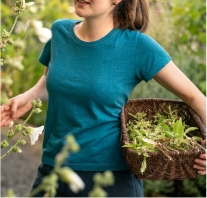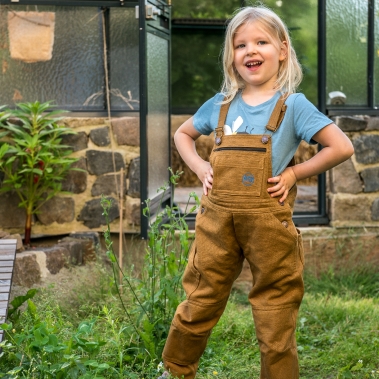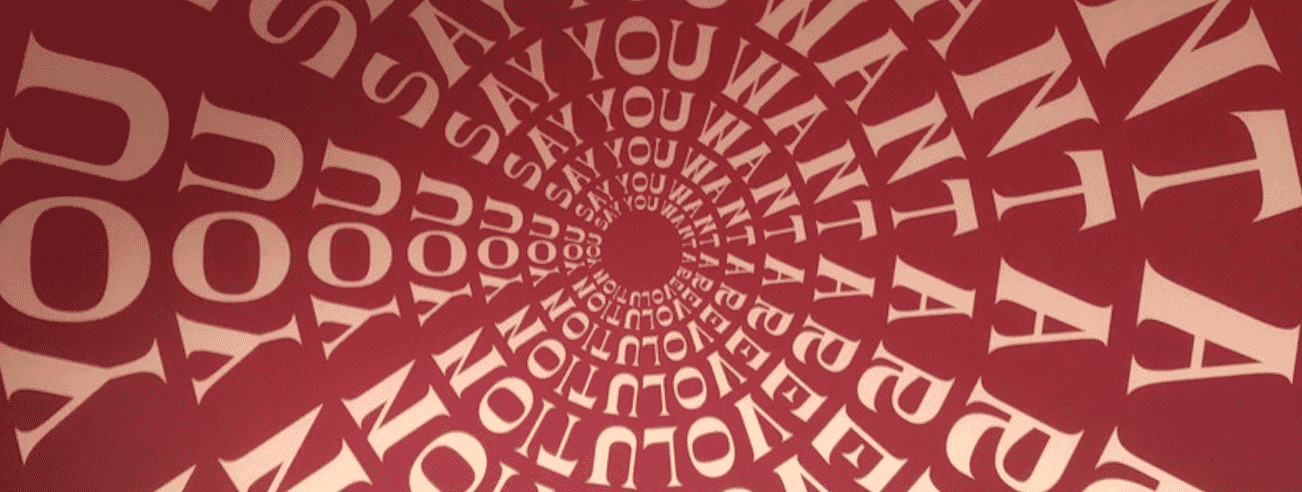1. What’s my impact if workwear is sustainable?
The market for workwear in Germany is 1 Billion euros (2019). That includes all work clothes for the different occupations, e.g., craft, construction, agriculture/ market gardening, medical/ care, food industry, and hotel/ catering. The market splits into rental service and purchase. Workwear is different than fashion or streetwear: Hygiene requirements with higher washing temperatures, abrasion resistance for concrete jobs, or work with heavy machinery and functional design to store your tools.
What’s the market share of sustainable workwear? There’s no reliable data today. Looking at global cotton production allows conclusions. The annual cotton yield is 25 Mio tons, and the crop surface is 30 Mio hectares. Less than 1% is grown under ecological standards (2019).
Fully sustainable are only organically grown plant fibers like cotton, linen, or hemp. The garment must be of high quality, robust manufactured, and timeless design. Recycling waste clothes is inefficient today, too complex, and expensive. But in theory, that could be sustainable. Plastic from recycled waste like old fishing nets counts as sustainable but still is too inefficient and costly to work in high volumes.
The impact of workwear consumption is massive and concerns the entire garment lifecycle: growth of fibers, production of garment, lifetime, and use and disposal. Fabrics for workwear contain mostly a minimum of 50% plastics. The average removal is residual waste in landfills or combustion. Another critical point in the mass market workwear is the working conditions in the factories. Better social standards are instead the exception.
Becoming aware of the consequences of “just” shopping is a good start. Changing your habits is the next step. Every action here has a significant impact on primarily global structures.
2. Which workwear is best for my job? The three different kinds of outfits
You’re outside a lot, working in all weather conditions, and you need workwear that functions best? There are 3 kinds:
A) Industry: Construction workers, farmers, market gardeners, and partly crafters work a lot outside and need robust clothes. With climate functions protecting you from the cold or ventilation in heat.
B) Special cloth for dedicated professions: cut protection for forestry work or industrial tree climbers, heat/fire-resistant cloth for fire people, or welding. For most unique requirements, there are classifications and norms, e.g., EN ISO 11612:2015 Protective gear against heat and flames or EN ISO 14404 knee protection for work on knees.
C) Season Cloth: next to industry-specific designs, there’s a work cloth for cold or extra light summer cloth, partly with ventilation known from the outdoor market.
3. Is sustainable workwear always the better choice? All pros and cons
Pro:
- sustainable workwear is equally robust. It depends on the composition of the materials and the usage. The exchange of fabrics with organic material or recycled fibers will result in comparable quality. That should also result in equal classification. Pure plant-based material must be extra robust, tight weave, and heavy quality.
- Persistence: High-quality fabrics and best craft result in extended usage and thus sustainability. How easy is the cleaning of mostly dirty equipment? Is a standard machine washing program enough, or do you need different treatment of stains or multiple cleanings?
- Circular economy: the aim is to keep the product alive, using recycling, upcycling (reuse of fibers), or a second-hand market. Or the disposal at life end is possible by composting, which requires 100% plant-based natural fibers, not contaminated.
The cons:
- Specialist workwear is protected at dedicated parts, e.g., knees with Kevlar or Cordura. These synthetic fibers offer exceptional persistence for cut protection and abrasion. There’s no sustainable equivalent.
- Variety: the workwear market is enormous; the call for sustainable workwear is yet more limited. Single industries like craft, agriculture, and market gardening will find products easier since their requirements are more standard. Other professions that work primarily indoors, like care or catering, should have a good offering already.
- Classification & norms: the sustainable part of workwear is in its beginnings, years behind the fashion. Safety classification and standards are thus not entirely applicable.
- Prices: Organic crops without pesticides and no genetically modified seeds cost more. The certification of fabrics and products also costs. “Fast Fashion” with cheap mass products is a negative trend in all fashion segments, including workwear.
4. These checks are vital if you choose sustainable workwear
Check your actual equipment. What can be substituted by sustainable products when next shopping is unavoidable? What pieces of your workwear do you like best, what supports your jobs? The longer you wear each piece, the better its footprint.
- Which materials contain your clothes? Natural plant fibers, plastics like polyester, or a mix? Do you require reinforced material? Even recycled plastic has a terrible balance. The less plastic content, the more sustainable.
- Special workwear: which DIN-Norm or PPE (personal protective equipment) must your workwear meet?
- Fitting/Design: can you deliberately choose, or is there a requirement? Pant, BIB, Overall, short pants, etc.
- Function: what supports your work? Knee pads, folding rule pocket, cell phone pocket, or fixation for extra toolbag?
- Waterproof or fire resistant?
- Sizes: only buy the correct size, there are regular, short and long sizes for women and men.
5. These 8 eco labels help you check for sustainable cloth
https://www.ecolabelindex.com/ecolabels/?st=category, textile Global Ecolabeling Network is a global non-profit Organisation
A) GOTS strict eco standard, fair production
B) Fairtrade Product label for cotton: Label for fair trade
C) IVN: strict eco-label for cloth, only natural fibers
D) Green Button: eco-standard, fair production
E) Made in Green by Oeko-Tex: Focus on low polluted production
F) Bluesign label: Focus on low polluted & fair textile production
G) OCS (Organic Content Standard): eco-standard
H) EU Ecolabel: eco-standard for textiles and many other product groups
Significant steps towards sustainability for textile production are the complete surrender of pesticides, genetically modified seeds, and reduction of water consumption. Worldwide there are many eco-labels. They all have different strict requirements on products. The German and EU market mostly use the named eight and many more like Naturland Textil or Green Shape by VAUDE. You need to check the label itself or send a request for details to the brand.
The terms “eco” and “bio” are well protected for food and crops. For textiles, there’s no such protection, same for “sustainable,” “fair,” or “eco-friendly,” etc.
6. Workwear shopping: spare these 3 mistakes
Do you want a sustainable lifestyle, if best for everything? Start with your cloth, including your workwear. Avoid these 3 things:
- Speed shopping: you have an important meeting, but no clean, proper work pants? Check your material; maybe laundry will do the job or a minor repair with needle and thread? Check your wardrobe before you start spontaneous shopping. Don’t do unnecessary shopping. Do your shopping with a clear plan, time, and ease.
- Wrong size: you search for a pant; you know your product from earlier shopping? Is your size not in stock? Or the design you want as a woman is only available for men? Only buy the correct size and take a complete check of sizing charts or automated measurement tools. A man’s pants can not fit a woman’s body; bodies are mostly too diverse. Your work material must fit without compromise.
- Fashion styles: also, workwear has started with more fashion elements lately. Classical designs offer prolonged use; we wear them more. They are easy to combine. Seasonal styles with eye-catching colors are fun but quickly too much. The longer and more frequent you wear each piece, the better for you, your savings, and the environment.




Comments (0)